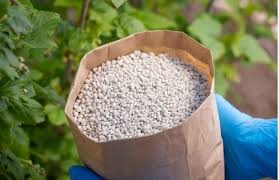
Nov . 05, 2024 10:09 Back to list
fertilizer 15-30-15
Understanding the Benefits of Fertilizer 15-30-15
In the world of agriculture and gardening, the choice of fertilizer plays a pivotal role in ensuring that plants receive the necessary nutrients for healthy growth. One type of fertilizer that has gained popularity among gardeners and farmers alike is the 15-30-15 formulation. This article will delve into what this fertilizer is, its components, and its benefits for various types of plants.
The numbers in the fertilizer rating (15-30-15) represent the percentage of three essential nutrients nitrogen (N), phosphorus (P), and potassium (K). In this case, the fertilizer contains 15% nitrogen, 30% phosphorus, and 15% potassium. Each of these nutrients plays a critical role in plant health
1. Nitrogen (N) This nutrient is vital for promoting leafy, vegetative growth. Nitrogen is a major component of chlorophyll, the green pigment in plants that is essential for photosynthesis. A higher nitrogen content is particularly beneficial for crops and plants during their growth phases when foliage development is crucial.
2. Phosphorus (P) With the highest percentage in this formulation, phosphorus is essential for root development and flowering. It plays a key role in energy transfer within the plant and is crucial for seed formation and fruiting. A fertilizer rich in phosphorus is especially recommended for flowering plants, fruit-bearing crops, and for establishing strong root systems in young plants.
3. Potassium (K) This nutrient contributes to various functions within the plant, including water regulation, enzyme activation, and overall plant resilience against diseases. Potassium helps strengthen the plants' ability to withstand drought and enhances the overall quality of fruits and vegetables.
fertilizer 15-30-15

Given its specific nutrient ratios, fertilizer 15-30-15 is particularly well-suited for flowering and fruiting plants
. Gardeners often use it during the active growth stage to boost blooming, improve fruit set, and strengthen root systems. For example, this formulation is frequently utilized for vegetable gardens, especially for crops like tomatoes, peppers, and fruiting shrubs, ensuring robust yields and high-quality produce.The application of 15-30-15 fertilizer should be timed correctly for maximum effectiveness. Typically, it is recommended to apply this fertilizer during the early growth stages or right before flowering to give plants the necessary nutrients to support blooming and fruiting. However, it is important to follow the manufacturer's instructions regarding the amount to apply, as over-fertilization can lead to nutrient burn and can harm plant health.
Additionally, while 15-30-15 offers numerous benefits, it's important to understand that plants also require micronutrients for optimal health. Therefore, it is advisable to conduct a soil test to determine any deficiencies in micronutrients that may need to be addressed. Balancing the application of 15-30-15 with other nutrient sources can create a holistic approach to plant nutrition.
Lastly, the environmental impact of fertilizers should not be overlooked. Using fertilizers responsibly, incorporating organic matter into the soil, and utilizing slow-release formulations can help mitigate potential runoff and pollution of waterways.
In conclusion, fertilizer 15-30-15 is a powerful tool for gardeners and farmers looking to enhance the growth and fruiting of their plants. With its high phosphorus content supporting robust root and flowering systems, coupled with essential nitrogen and potassium, this fertilizer can significantly improve plant health and yield. However, as with any agricultural input, responsible use guided by soil testing and best practices will ensure sustainable and healthy plant growth.
-
Premium 8 12 16 Fertilizer – High-Efficiency Compound & Granular NPK Supplier
NewsJun.10,2025
-
High Quality Agricultural Grade NPK Fertilizer Manufacturer & Supplier Reliable Factory Price
NewsJun.10,2025
-
Organic Fertilizer for Corn Boost Yield Sustainably
NewsJun.10,2025
-
Organic Fertilizer for New Plants Natural Growth Boost & Eco Nutrients
NewsJun.10,2025
-
Optimized Hydroponic NPK Fertilizer – Fast Growth & Nutrients
NewsJun.09,2025
-
Top-Rated NPK Fertilizer for Fruit Trees - Boost Growth & Yield
NewsJun.09,2025
